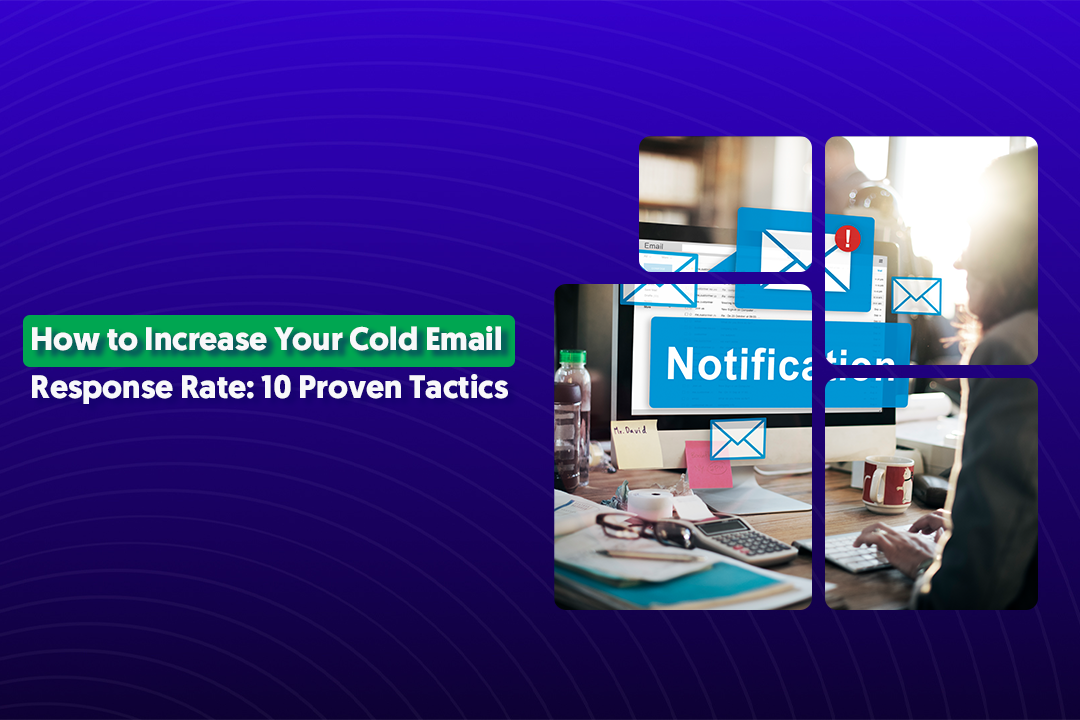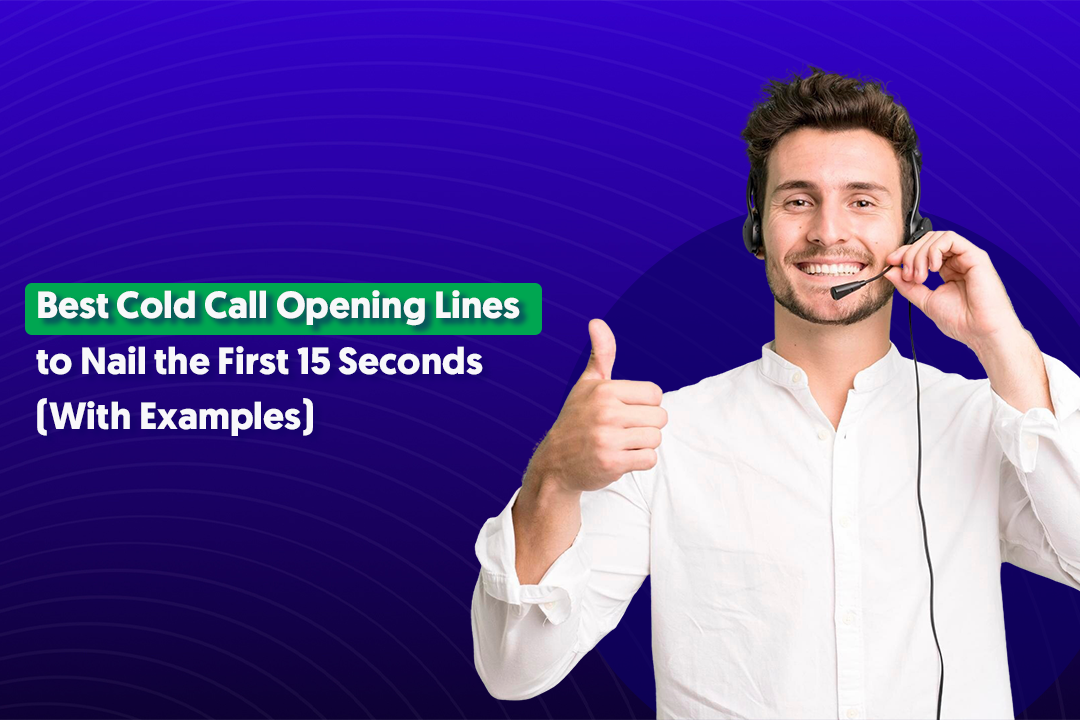Key Takeaways
- LinkedIn voice messages can boost reply rates by up to 35% by adding a personal, human touch.
- First 5 seconds matter — start with a personalized hook to capture attention.
- Keep messages short and clear, ideally 20–30 seconds, for maximum engagement.
- Use voice to build relationships in sales, recruiting, or networking, not just re-engage leads.
- Follow up strategically with friendly DMs or value-added content if no response is received.
- Recording in a quiet space and speaking naturally increases credibility and impact.
LinkedIn voice messages are one of the most underrated tools for making real human connections in a crowded inbox.
Voice messages can boost reply rates by up to 35% compared to plain text messages — because hearing your tone, energy, and authenticity builds instant trust.
You can use LinkedIn voice notes not just to re-engage cold leads, but also to start new sales conversations, recruit top talent, or strengthen professional relationships with prospects and clients.
Yet, because this feature is only available on the LinkedIn mobile app (and somewhat hidden), very few people use it — which makes it a powerful way to stand out and sound more human in your LinkedIn outreach.
Let's learn how to send a great voice message to boost up your LinkedIn lead generation game!
How to Record and Send a LinkedIn Voice Message
LinkedIn voice messages let you record and send up to 60 seconds of audio directly to your 1st-degree connections — meaning you can’t send a voice note to someone you’re not connected with yet.
💡 Pro tip: If you’re not already connected, start by sending a short personalized text message or a connection request. Once they accept, you’ll be able to follow up with a voice message to stand out in their inbox.
Here’s how to record and send a LinkedIn voice message:
- Click on the messaging icon in the top right corner of the LinkedIn app.

- Select the person that you want to message.
- Click the record button on the bottom right of the screen.
- Hold the button down while you record your message.
- Lift your finger from the button once you’ve completed your message.

When you’ve finished recording, LinkedIn will prompt you to either send your message or cancel it. If you’re satisfied with it, click send. Otherwise, you can cancel the recording and try again.
What To Say In A LinkedIn Voice Message: The Four-Step Formula
Sending a cold outreach message isn’t just about leaving a prospect your name and details. The following four steps will help you craft a great message that produces results.
1. Research
Personalizing your message for every prospect increases the odds they’ll contact you back. The only way to do this is to do your research.
The best way to learn about your prospect is to visit their LinkedIn profile. You’re looking for one piece of information to help you customize your voicemail. Most often, you’ll use their job title, job description, company type or a shared experience.
Here’s how proper research shows up in a script:
“Hey Dave, saw we’re both from Miami! Since you’re leading Supply Chain, your team must have been hit by the UPS’ rate increase. I’m sure it’s tough on margin, especially when Acme Corp’s fighting other low-cost competitors in the metal parts space. I have a connection overseas that gets my clients 10% below UPS costs through a new load management process. If you want to see if that system could work for you, let me know what email to reach you at.”
Without a personalizer in the first 5 seconds of your voicemail, your recipient will think it’s a generic, irrelevant message sent from someone who doesn’t understand their job.
2. Compliment
After a brief introduction, compliment your prospect. Mention a recent promotion or major achievement. Compliments make people feel good, therefore making you more likable.
3. Add Value
Give your prospects a reason to call you back. Offer them something of value that can help them at their current job — ideally free of charge.
Your main goal is to get the prospect to return your voice message, and they’ll only do that if there’s something big in it for them.
4. Call to Action
Finally, you need to call your prospects to action. Whether you want them to leave a phone number or email, reply to an open-ended question or something else, be literal in your ask.
Clearly state the steps they need to take to get what you have to offer.
Example Call-to-Actions (CTAs) for Voice Messages
- “Reply with the best email to send you more info.”
- “Drop me a time that works for a quick call.”
- “Let me know if you’d like me to send over a resource I mentioned.”
- “Would love your thoughts on this — can we chat this week?”
- “Reply yes if you’re interested, and I’ll follow up with details.”
Hook With Personalization in the First 5 Seconds
The first five seconds of your voice message are critical, this is when your listener decides whether to keep listening or swipe away. Start with something personalized that shows you’ve done your homework.
Mention a recent post they shared, a mutual connection, or a company milestone. A strong, relevant hook immediately grabs attention and sets the stage for your message.
Sample 30-Second Sales Outreach Script
“Hi [First Name], I saw your recent post about [topic] and loved your insight on [specific point]. I work with [your company] helping teams like yours [achieve specific result]. I’d love to share a quick idea that could [benefit]. Would you be open to a 15-minute chat this week?”
Sample 30-Second Recruiting / Job Search Script
“Hi [First Name], I noticed your work at [Company] and was impressed by [specific project or achievement]. I’m currently looking for [role/skill set] and thought you might have some advice or know someone in your network. Could we connect for a quick 10-minute chat?”
Voice Message Best Practices
The above four steps are just the basics of crafting a message aimed at getting great results.
Now, let’s go over a few other best practices to make your LinkedIn voice messages even more effective.
Be Conversational but Professional
Even if you don’t know the person well — or at all — speak as if you have an established relationship. Smile while talking to naturally convey warmth and energy. Avoid heavy jargon or overly formal language; instead, sound human and approachable. A friendly, professional tone makes your message more engaging and relatable.
Keep it Short
While LinkedIn allows up to 60 seconds, 20–30 seconds is typically ideal for engagement. This is enough time to introduce yourself, highlight the reason for reaching out, and include a brief CTA — without overwhelming the listener. Short messages are easier to digest and more likely to get a response.
Follow Up
Not everyone will reply on the first try, so plan a two-step follow-up strategy:
- Friendly DM after 2–3 days if they listened but didn’t respond — reference your voice message and keep it casual.
- Optional value-add follow-up after 5–7 days — share a helpful resource, insight, or tip related to their role or business to reignite the conversation.
Record in a Quiet Space
Background noise can distract from your message and make you sound less professional. Find a quiet environment to record your voice note. Clear, crisp audio makes you sound more credible and shows you respect the recipient’s time.
Why Send a Voice Message Through LinkedIn?
So why choose a LinkedIn voice message over a plain text note? There are several compelling reasons:
- Higher cut-through rate: Very few people use voice messages, so sending one instantly feels personal and unique, helping you stand out in a crowded inbox.
- Builds human connection: Voice conveys tone, warmth, and authenticity in a way text simply can’t. Your personality and charisma come through, making it easier to connect with prospects, candidates, or colleagues.
- Time-saving: You can speak three times faster than typing, letting you convey the same message in a fraction of the time.
- Low-pressure communication: Recipients can listen when it’s convenient for them and respond at their own pace, making your outreach feel less intrusive.
- Algorithm impact & faster responses: Some LinkedIn users report that initial outreach via voice leads to quicker replies and better engagement, since recipients are more likely to respond to a human-sounding message.
Overall, voice messages combine efficiency, personalization, and credibility, making them a powerful tool for sales, recruiting, and relationship-building on LinkedIn.
Conclusion
LinkedIn voice messages are a simple yet powerful way to stand out, build genuine connections, and boost reply rates.
By keeping your messages personal, concise, and professional — and following up strategically — you can turn casual outreach into meaningful conversations that drive real results.
At Cleverly, we’ve helped 10,000+ clients generate qualified leads for companies like Amazon, Google, Uber, PayPal, Slack, Spotify, and more. Our LinkedIn outreach strategies have contributed to $312 million in pipeline revenue and $51.2 million in closed revenue.
If you’re ready to generate high-quality B2B leads through proven LinkedIn strategies, we can help you make it happen. Let's talk!

Frequently Asked Questions
Frequently Asked Questions
1. How long can a LinkedIn voice message be?
LinkedIn voice messages can be up to 60 seconds long. Keeping it between 20–30 seconds is ideal for higher engagement and better response rates.
2. Can I send a voice message to someone I’m not connected with?
No — voice messages are limited to 1st-degree connections. As a workaround, send a personalized connection request or short text first, then follow up with a voice note once they accept.
3. What should I say in a LinkedIn voice message?
Start with a personalized hook in the first 5 seconds, briefly introduce yourself, explain the reason for reaching out, and include a clear call-to-action. Keep it conversational and professional.
4. How do I make my voice message more effective?
- Smile while speaking to convey warmth.
- Record in a quiet space for clear audio.
- Keep it concise (20–30 seconds).
- Follow up strategically if there’s no response.
5. Can LinkedIn voice messages improve reply rates?
Yes. Because few people use them, they feel personal and human, often boosting reply rates by up to 35% compared to text messages.
6. Are voice messages suitable for sales, recruiting, or networking?
Absolutely. Voice messages work well for sales outreach, recruiting top talent, or relationship-building, helping you connect more authentically than with text alone.





